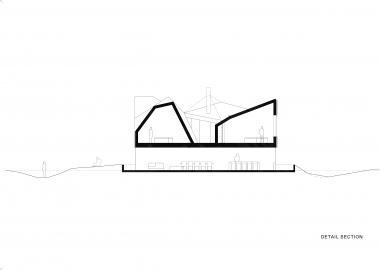Dune House
The house is situated in Thorpeness, England on the Suffolk coast, replacing an existing building at the site. The house is a holiday house for rental and is part of Living Architecture.
To get a planning permission it was important to relate to the existing, typical, British seaside strip of houses. The roof-scape with the bedroom floor, plays with the formal presence of these buildings, and also brings into mind a romantic remembrance of holidays at bed- and breakfasts while traveling through the UK. The Dune House is rooted in a Scandinavian tradition of strongly referring and relating to the surrounding landscape, while at the same time inhabiting clear relations to the English building traditions in the area.
The living area and the terraces are set into the dunes in order to protect it from the strong winds, and opens equally in all directions to allow for wide views. The corners can be opened by sliding doors; this emphasizes the floating appearance of the top floor.
The materiality of the ground floor; concrete, glass, aluminum, relates to the masses of the ground, while the upper floor is a construction made of solid wood, cladding stained dark, which relates to the existing gables and sheds found in the area. The roof of the house is clad in golden sheets of steel that mirrors the changing sky. The ground floor is contrasting this by its lack of relationship to the architecture of the top floor. The architectural ambiguity of the house also addresses the programmatic difference between the transparent and sociable ground floor, and its private and secluded huts of the top floor bedrooms. This comes across as the two distinct personalities of the building.

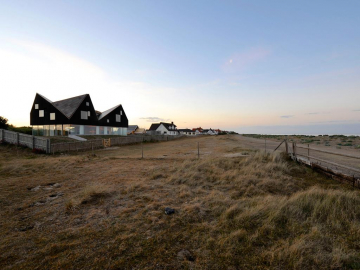
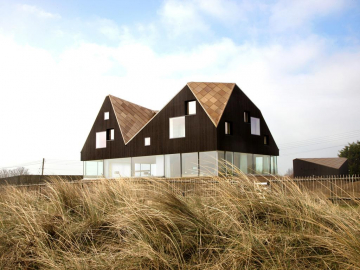
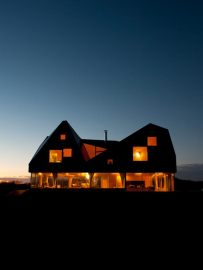
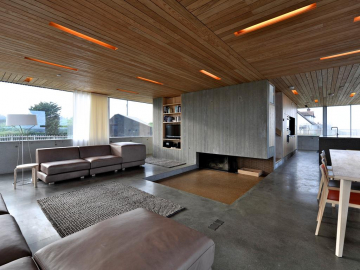
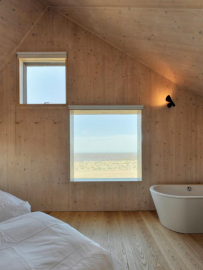
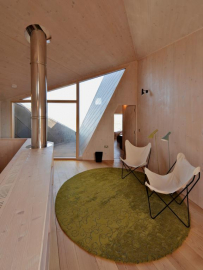
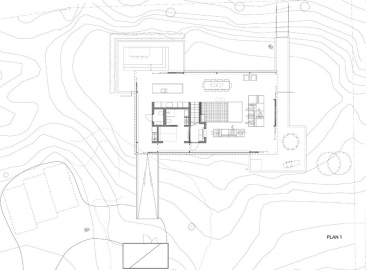
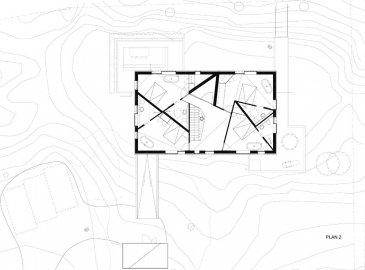
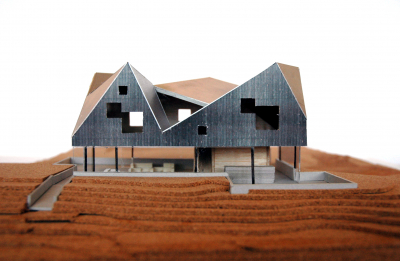
.jpg)
.jpg)
